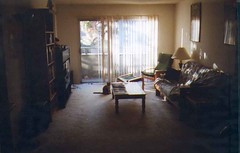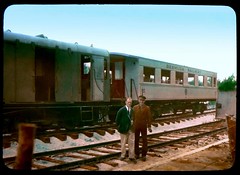How to Sell on eBay: Frequently Asked Questions by New eBay Sellers
I get a lot of questions from both new and experienced sellers. Here are the common questions I get from new sellers.
As you will see below, these answers are short answers aimed at beginning sellers. As a new seller gains experience on eBay, you will learn that all of these issues are more complex and nuanced and any of these questions can have many answers depending on the given situation.
Most of the topics I cover here are covered in much more detail in The Complete eBay Marketing System.
Q: Where should I set my starting price?
A. It is a fact that lower starting prices attract more bids. It is also a fact that auctions with lots of bids end up with higher prices. So you always want to use a low starting price. The exception to this is if you are selling a very expensive item that you could not afford to lose money on, or if you are selling an item that is so specialized that there will not be many bidders. In these cases you may want to use a higher starting price or a reserve (see below for info on reserves).
Q: When is the best time to start my auction?
A. The better question to ask is when should my auctions end. Deciding which day to start depends on the auction duration you select. Statistically auctions ending Sunday and Monday evening between 5PM-7PM Pacific Time (all eBay times are Pacific) get the most visibility and the highest number of bids. But this is not true of all products so it pays to test. For example, if you are selling something to retired people, they are online more during the day than in the evening. Students tend to be online between 3PM – 5PM. If you are selling something to a business, then the morning and early afternoons might be best.
Q. What should I sell on eBay?
A. Start with items around your house. Essentially you want to have an eBay garage sale. Just take a box and go through your house and place things in it that you haven’t used in the past year or so or don’t really need or want anymore. This will give you some experience, clear out some space in your house and give you a little cash flow to invest in merchandise to sell. In general, you will find that items sell on eBay for far more than you would realize at a garage sale.
Forget trying to sell popular or hot consumer products. Look for a specialized niche of some kind where there isn’t so much competition. As a beginner and a small seller you just don’t have the resources to compete against the huge sellers on eBay who can spend thousands of dollars at a time buying inventory in bulk.
Once you are ready to find merchandise to sell, I recommend OneSource. They are the only source of wholesale and dropship information that I recommend other than my own. (See The Wholesale Buying System).
Do not join any of the many drop ship supply companies that require membership. Many of them are pure scams and the rest are pretty much a waste of money. These sites are basically middlemen who take a percentage. This results in not having enough margin to sell profitably on eBay. OneSource actually connects you directly to manufacturers, importers, liquidators and master distributors so you can buy at the lowest price. Best of all they charge a one-time fee instead of an ongoing membership cost.
Q: Should I use optional listing features like bold, highlight, gallery, etc.?
A. This depends on a lot of factors but mostly it is a question of return on investment. For example the Bold option costs .00. So it would not make sense to use this on a low cost item. eBay claims adding Bold will raise your final value by 11%. If you were selling an item that you though would go for around this would result in a break-even result. But, if you are selling something that you think would go for more than that, this option makes sense. In general I use the Bold Option on items that I think will bring in over .
So look at each option, calculate the cost and figure out if it makes sense. The one option I always buy is Gallery (.35). If you don’t put a gallery photo next to your listing you won’t get many views to your auction.
Q. How long should I run my auctions
A. If an item is popular you can use a short duration like 3 or 5 days. On most items I use 5 or 7 days. I rarely use a 1-day auction unless I am selling something like an event ticket for something that happens in a few days. I save 10-day auctions for very expensive items when I want to get the most exposure to insure getting the highest price.
Q. What should be included in my listing?
A. Write a clear and concise description that fully describes what you are selling. Include any specifications or physical description. If you are selling anything used be sure and describe its condition and reveal any flaws. Include clear photos of the item being sold and a close up of any damage (tears, scratches, dents, etc.)
Include details about shipping, payment types accepted and your return policy.
Writing listings is a real art they you will learn with experience. If you want to learn more, the topic of writing listings and auction titles is one of the longest chapters in The Complete eBay Marketing System.
Q: Should I use “Buy It Now”?
A. eBay’s Buy-It-Now (BIN) feature is one of the most talked about of eBay’s optional features. Some love it and others hate it –but the trick to using BIN is knowing how to use it.
Buy-It-Now (BIN) is a feature that lists a fixed price next to your current bid price that allows a buyer to end an auction at any time by paying the BIN price. However, the BIN price disappears from the listing and search results once the first bid has been placed on an ordinary auction, or once the reserve price has been reached on a Reserve Price Auction (RPA).
One problem with BIN items that start with a low bid is that someone interested in the item will place an early bid at the minimum just for the purpose of getting the BIN to disappear. Remember there is no cost to bid. Low bidders have nothing to lose by placing unreasonably low bids. If they win, they get a bargain. If they lose they just move on to the next item.
Q: Should I use a reserve price?
A. If you want to protect yourself from selling an item at too low a price you have two options: Set a high starting price or use a reserve. Reserve Price Auctions (RPA) are very controversial. There are some people who hate them and will not bid on an item that has a reserve. However, I have tested RPAs extensively and found that I get a higher conversion rate (successful sale) if I use a low starting bid and place a reasonable reserve on the item, than if I use a high starting price.
The biggest risk with a reserve is the extra fee. eBay charges .00 for items with a reserve up to .00, .00 for items from to 0 and 1% (up to a maximum of ) on items over 0. But if your item sells, then eBay credits the reserve fee back to your account.
In general you should not use a reserve on items that are popular and get lots of bids as these will always do well without it.
Q: When should I leave feedback?
A. If you consistently offer a quality product, communicate effectively with customers, offer a generous return policy, and give great customer service then I recommend you leave feedback as soon as your receive payment. You may get the occasional negative feedback, but your total feedback score will be highly positive and will grow quickly.
Q: Is it OK to mark up my shipping cost?
A. The short answer to this question is: Be fair. You should recover your costs but not try to make money on shipping. If you try to make shipping a profit center, buyers will resent this and may leave you poor feedback or hit you with a low star rating on the new eBay feedback system.
Clearly state your shipping charge in your auction. If you are adding a handling fee, you should tell the bidders. For example you might put a statement like:
I charge the actual cost to ship an item plus a .00 handling charge to cover the cost of boxes and packing materials.
eBay gives you the choice of using calculated shipping or putting in a fixed shipping amount. I prefer to estimate the fixed amount as this allows bidders to see the shipping next to the search results. I find I get more hits to my auction when I do this.
Q: When should I offer free shipping?
A. Free shipping can attract additional buyers, but obviously you would not want to offer free shipping on very heavy items as the cost versus distance can be a very high variable. But on low weight items it can make sense. I like to use free shipping with Buy-It-Now. I set a BIN price high enough to cover the shipping and my profit and offer buyers free shipping if they buy it now.
Q: Should I sell internationally?
A. I used to ship internationally. Typically you get higher bid results from people overseas, however, the increase in postal rates has made this less attractive. There is also a higher risk to your feedback when shipping internationally as shipments can be delayed and more things can go wrong. So if you are a new seller, I would leave international selling to later when your feedback is higher and you have more experience.
Q: Should I include a photo of my item?
A. Always! Bidders rarely bid on listings without a photo. Actually I prefer to use 2 or 3 photos.
Q: Should I offer a return policy?
A. Yes. I have offered a very generous return policy since I started selling on eBay in 1999. Over that time I have sold thousands of items and probably had fewer than a couple dozen returns.
Q: Do I need a PayPal account?
A. Yes. PayPal now accounts for over 90%





